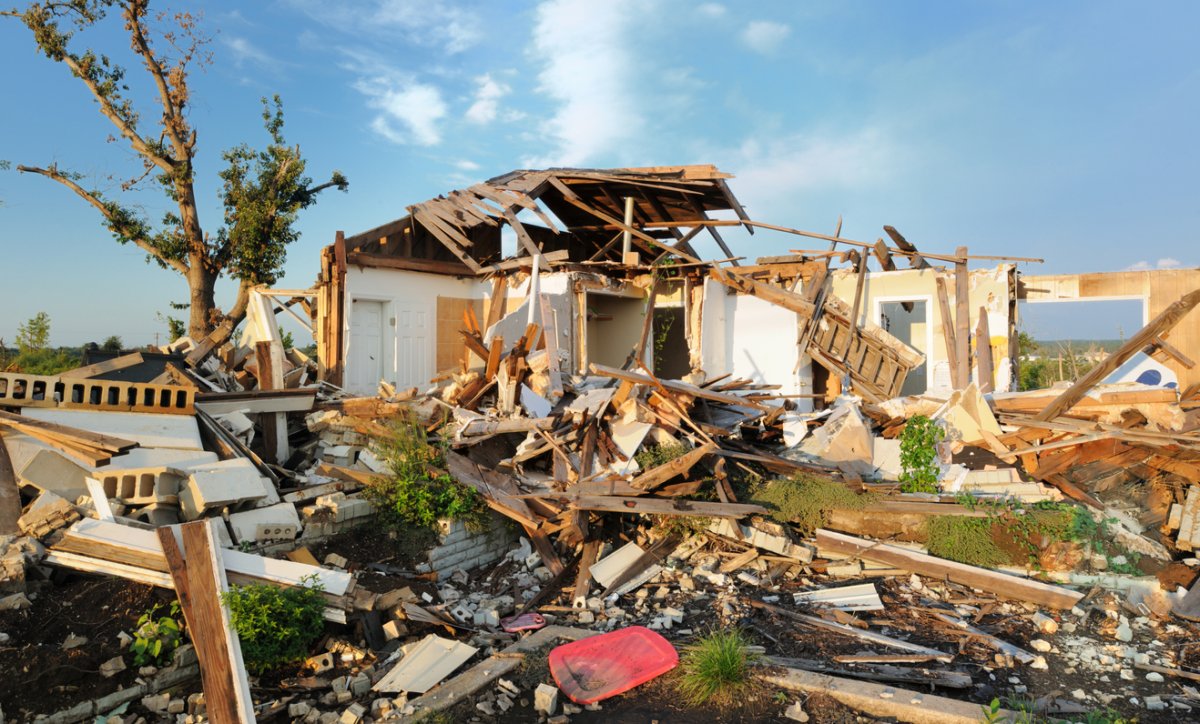

We may earn revenue from the products available on this page and participate in affiliate programs. Learn More ›
Highlights
Under a tornado watch or tornado warning in your area? An American Red Cross expert reveals how to weather the storm safely.
Tornadoes are among the most terrifying natural disasters. And today, folks in parts of Indiana and Kentucky face an imminent threat as a recent tornado watch has been issued. While they’re more localized than a hurricane or earthquake, their incredible wind force can destroy homes, roads, bridges, farms, and more in a very short amount of time (or over a distance of several miles). They may not last as long, but for those in or around the path of a tornado, they’re no less dangerous.
Families can improve their odds of weathering these funnel-clouds storms if they know the basics about what to do—and what not to do—when a tornado’s afoot. Ahead, American Red Cross Media Relations Lead Stephanie Fox shares expert tips that can help keep you safe.
1. Know the Season
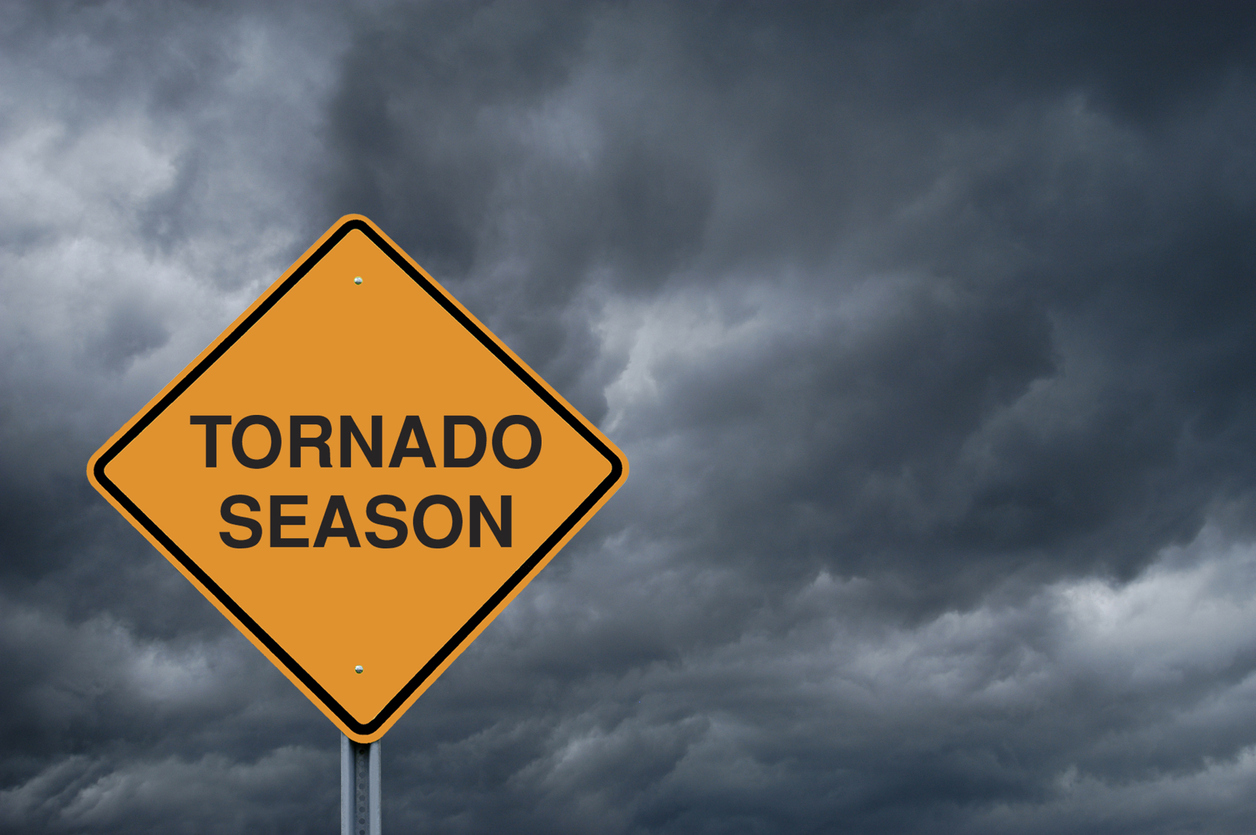
Tornadoes themselves literally pop out of the sky, but knowing when they’re most likely to occur can be a benefit. According to the National Severe Storms Laboratory, peak tornado season in the southeastern United States is during the cooler months. However, in the southern and central Plains, it shifts to May and June. In the northern Plains and Midwest, peak season is early summer.
It’s important to note that tornadoes can occur in all 50 states, so this is more a guideline than a rule. Year-round tornado preparedness is best.
2. Tornado Watches vs. Tornado Warnings
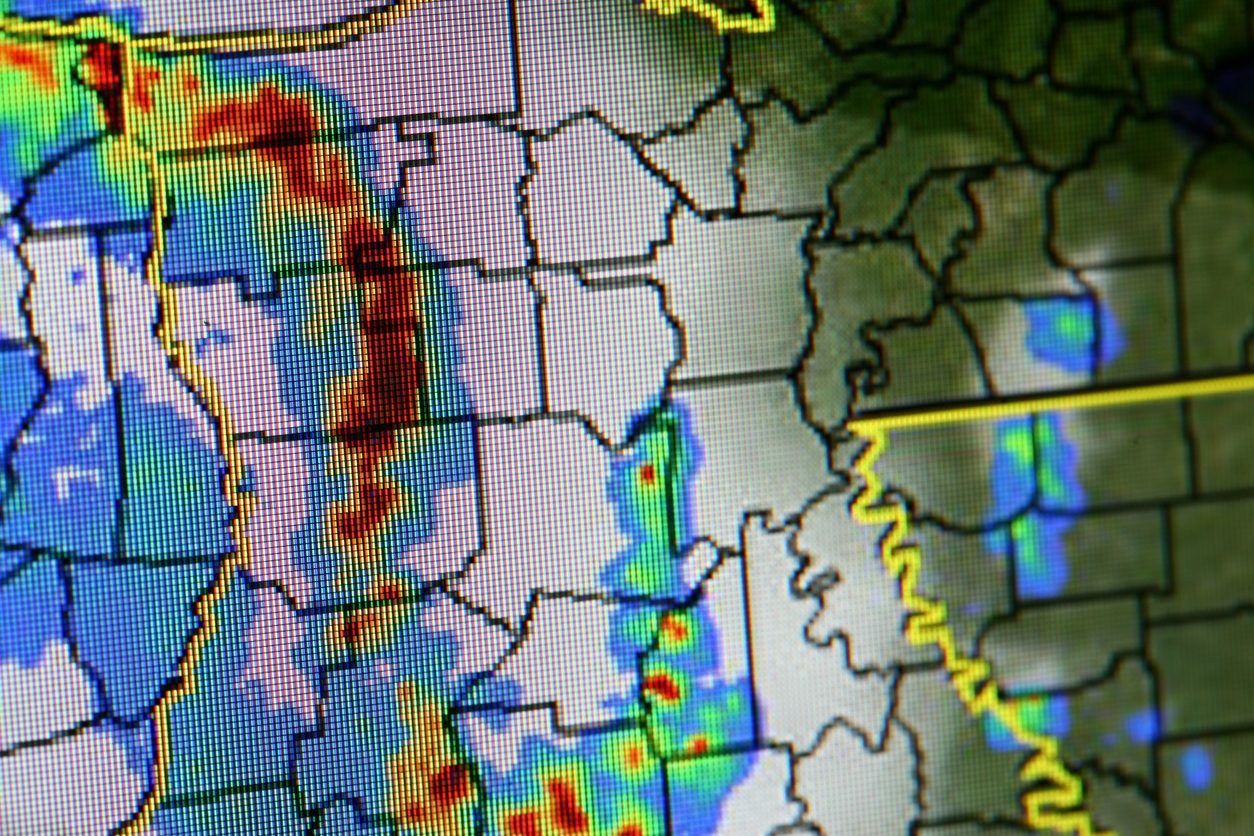
Most folks have heard of tornado watches and tornado warnings, but knowing the difference is critical.
A tornado watch means that the current weather conditions can support a tornado developing for the next few hours. Watches are issued for large areas at a time, alerting everyone in the area that there is potential for a funnel cloud.
“Be prepared!” Fox advises. “Conditions are such that a tornado may be possible in or around the watch area. A tornado watch is typically issued for a large area, covering numerous counties or even states.”
A tornado warning is a different story. Tornado warnings are issued when a tornado has been sighted or the weather radar indicates one has developed. With a tornado warning, there is imminent danger to people, livestock, and property.
“Move to a safe location right away until the danger has passed,” Fox says.
As one might surmise, warnings are more critical than watches. However, it’s important to take a tornado watch seriously.
3. Stock up on Emergency Essentials
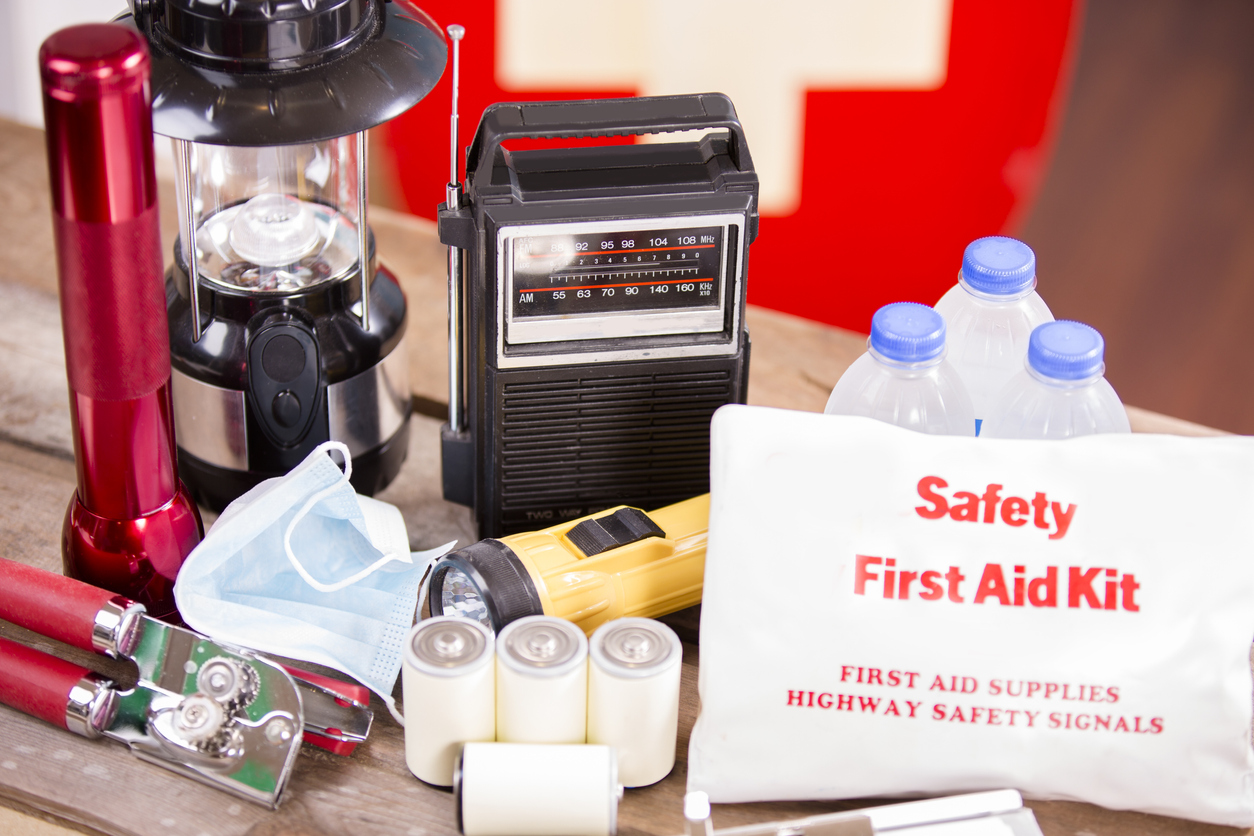
When there is a tornado threat, it’s best to shelter in place, but this requires certain supplies. The following items should be part of any family’s emergency essentials kit:
- A battery-operated TV, hand-crank radio, or internet device, and fresh batteries.
- A portable power station.
- One gallon of water for each person for about a week, and non-perishable foods.
- Toilet paper and paper towels, as well as a bucket and garbage bags to serve as a temporary toilet.
- A list of important phone numbers, contact information, and medications.
- A few changes of clothes (including footwear) tied up in garbage bags so they stay dry.
4. Know the Signs
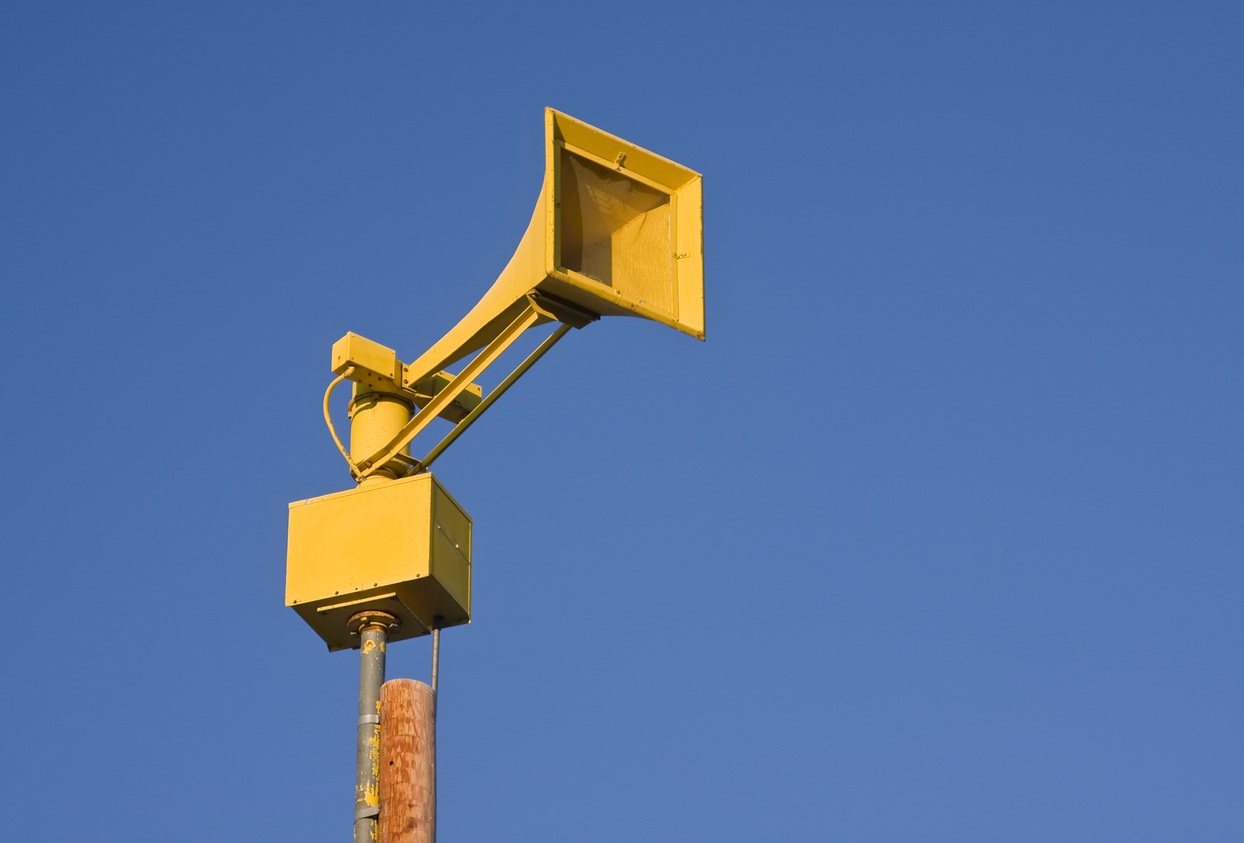
“While dark green skies, large hail, or a loud roar—similar to a freight train—can all indicate a possible tornado, they may not occur with every single event,” Fox says. “A tornado may also be rain-wrapped, making it nearly impossible to see before impact. It is essential to stay weather aware and to seek sturdy shelter should a warning be issued for your area.”
Some American cities in tornado-prone areas have tornado sirens to alert residents to the potential of a funnel cloud. These alerts signify the potential for tornados or other threats and that residents should head inside. However, it’s still important to know the signs of tornado-friendly conditions.
Some things to keep an eye out for:
- Strong thunderstorms
- Dark or green-colored sky
- Large, dark, low-lying clouds
- Large, damaging hail
- A roaring noise that sounds similar to a freight train
If these conditions exist, it’s best to gather everyone and head inside to safety.
5. Get Inside
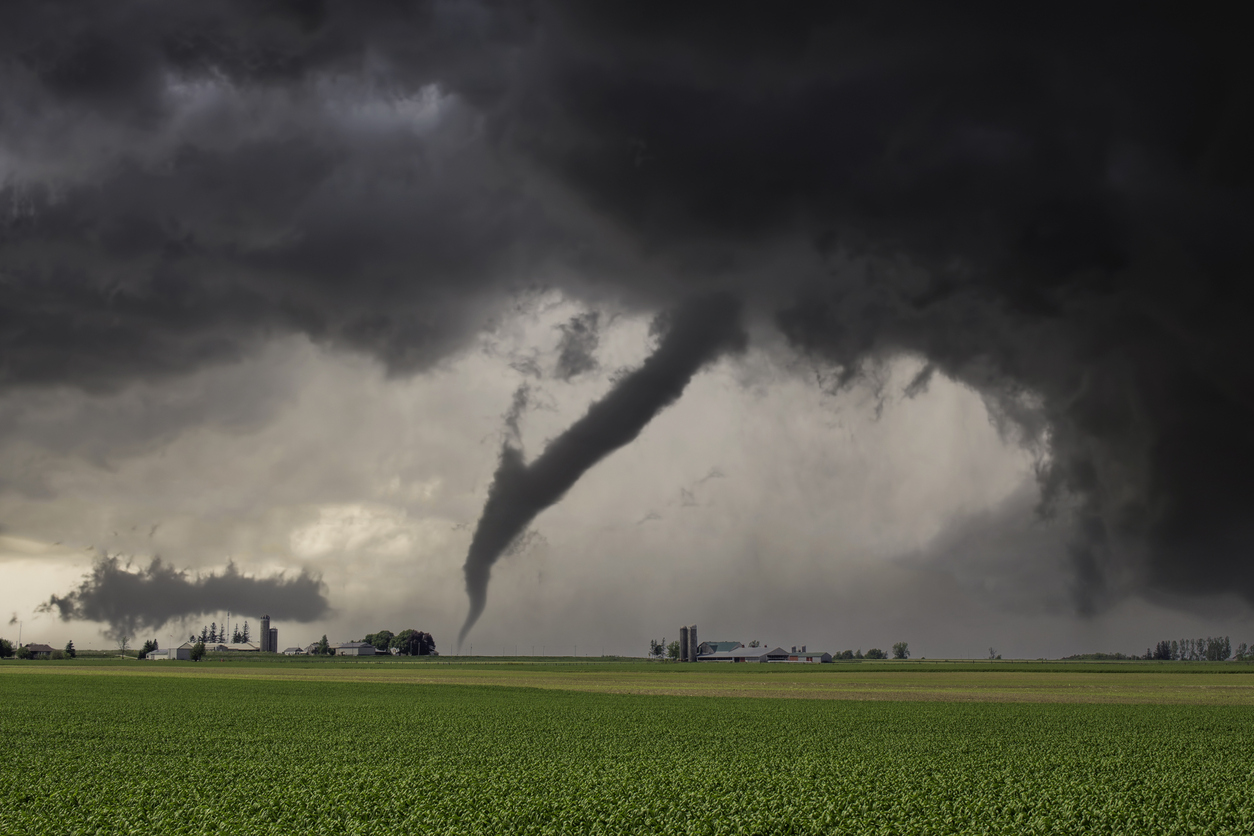
If you see a funnel cloud or notice the conditions are primed for a tornado, get inside. Don’t try to outrun the storm in a vehicle, and don’t try to take cover under bridges or other similar structures. Get to the closest structure, whether it be your own home or storm shelter, a store, neighbor’s home, garage, barn, or similar enclosed building to take cover until the storm passes.
6. Know Where to Shelter Indoors

Certain areas of a building or structure will be safer than others during a tornado. Areas like basements, interior rooms without windows, and hallways are better than those with windows and doors.
“The safest place to seek shelter during a tornado warning is in a storm shelter or basement,” Fox explains. “If those are not available, you want to go into the lowest level of your dwelling into the most interior room. The goal is to put as many walls between you and the outside as possible to prevent injury from flying debris or damage to your dwelling.”
It’s also a smart idea to choose a room to shelter in that doesn’t contain heavy objects like refrigerators, washing machines, and large furniture. If a tornado should cause these items to move or fall, they could hurt those inside.
Common wisdom suggests a bathtub can be a good place to ride out a tornado, and this is true if the bathroom is not on an exterior wall and there are no windows.
Basements are best for tornado sheltering, but there are a few things to consider. If you can, shut off the gas line that comes into the house. Do the same for the water line. Note that when you turn the gas back on, you will have to light the pilots in your gas appliances again.
“Once in your safe place, get as low to the ground as possible and cover your head with a blanket, pillow, or even a helmet if one is available,” Fox states.
Being in a vehicle or being outside during a tornado is not safe. The best course of action is to drive to the closest shelter. If you are unable to make it to a safe shelter, stay buckled up, get low in your car and cover your head or abandon your car and seek shelter in a low-lying area such as a ditch or ravine.”
—Stephanie Fox, Media Relations Lead at American Red Cross
7. Stay Informed

Staying up to date about the conditions after the storm is just as important as before. Use weather and emergency apps, radios, TVs, and other information sources to check on the damage in the area. Tornadoes can be very brief and localized, or they travel long distances while touching down. Your street might be untouched while the rest of the town experiences significant damage like lifted roadways and fallen bridges.
It’s also important to check for information from the local municipality. Any boil-water alerts or updates about emergency services might be available on the town’s website or Facebook page, so check there often after a tornado.
8. Assess the Damage
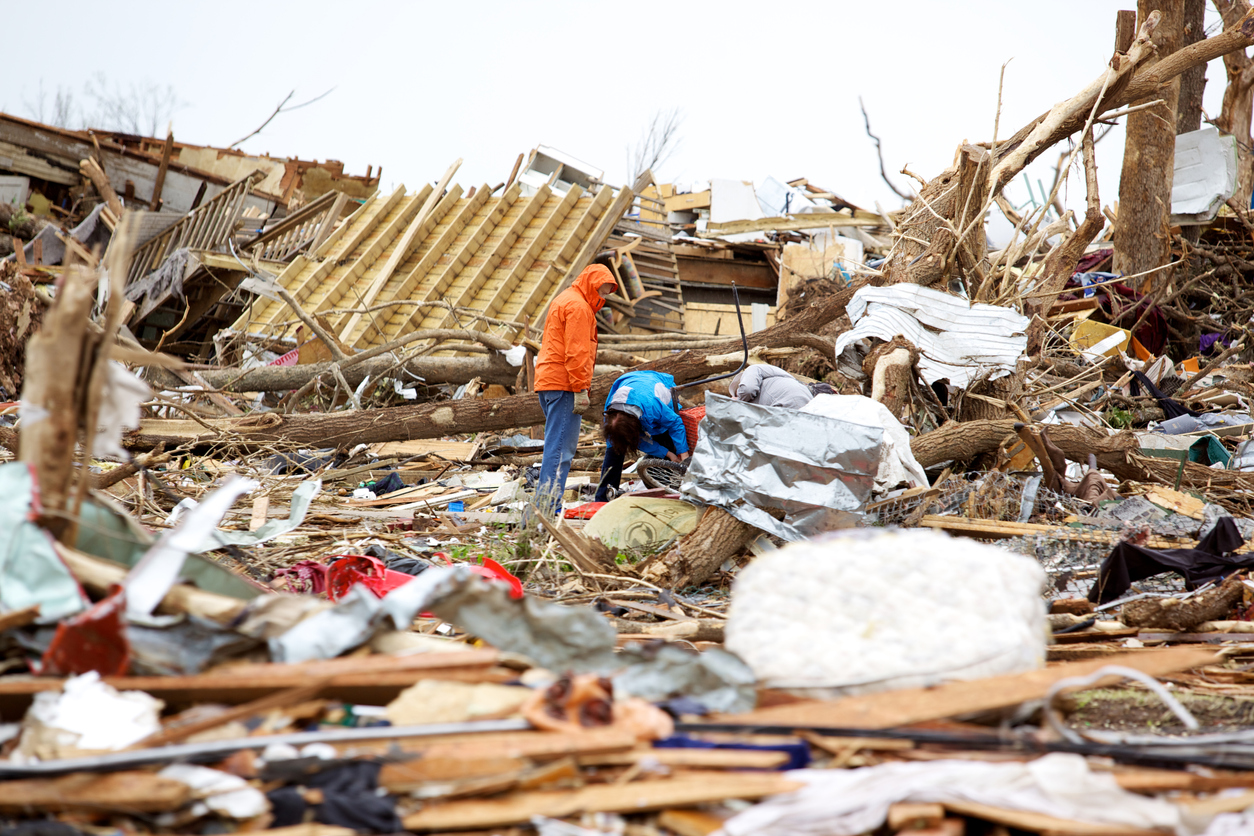
After the tornado warning lifts and the storm appears to have passed, head outside and assess the damage. Look for fallen branches, trees, telephone poles, broken windows, and other signs of damage around your property. Be sure to look for overhead hazards and, if the tornado was accompanied by flooding, stay out of any standing water as it could be hiding debris.
This is also a good time to check on your neighbors and call your friends and family to make sure they’re safe and sound, as well.
9. Avoid Hazards

If you’re able to stay put, avoid leaving the property after a tornado until reports in the area appear to be clear. If you’re driving, avoid any damaged roadways, downed power lines, or bridges that might’ve been along the tornado’s route. Unnecessarily putting yourself in danger could divert the attention of emergency services from another call where they could be helping someone else.
Additionally, “Prepare for disasters in advance by putting together a kit, making a plan with your family, and figuring out how you will stay informed when an emergency strikes,” Fox explains. “Your emergency kit should contain food, water, and other basic supplies to last at least three days for each family member. Also, don’t forget to include essential medications, copies of important documents, and special items for children and pets.”
